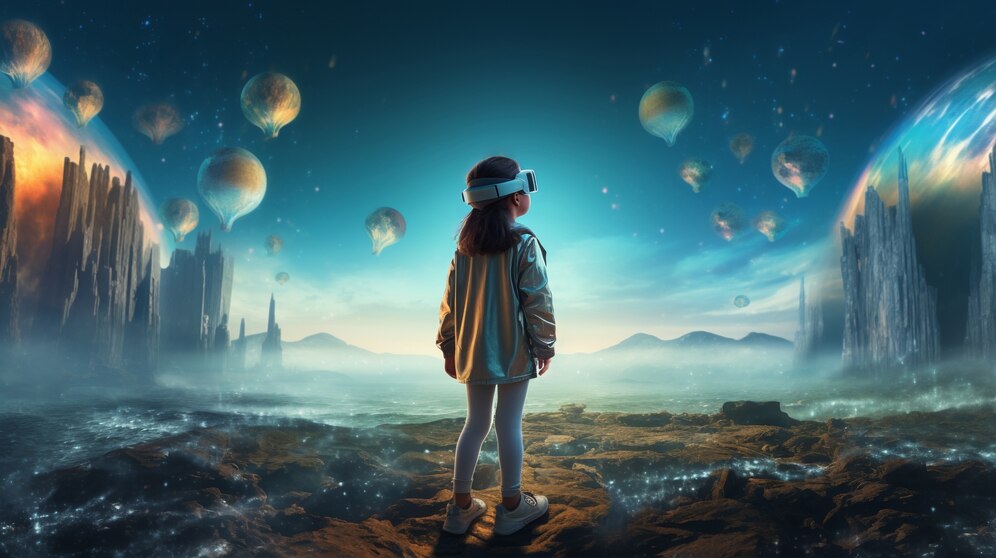Topic
Exploring Buší: Traditional Czech Folk Dances Unveiled

Welcome to the lively world of Buší, where traditional Czech folk dances come alive with vibrant energy and a sense of community. Step into a whirlwind of twirls, stomps, and laughter as we delve into the rich history, captivating costumes, and infectious music that make Buší an integral part of Czech culture.
Prepare to be transported back in time as we uncover the origins of Buší and explore its various forms. From rustic village celebrations to modern-day revivals, this dynamic dance tradition has evolved through the ages while still retaining its authentic charm.
Whether you’re a seasoned dancer or simply curious about different cultural expressions, join us on this enchanting journey as we unravel the secrets behind Buší’s enduring appeal. So grab your dancing shoes and let’s dive right in!
History and Origins of Buší
Buší, a lively and spirited Czech folk dance tradition, has deep roots in the history of the Czech people. Its origins can be traced back to the 18th century when it was primarily performed by peasants during harvest festivals and other important celebrations. This vibrant dance form soon became an integral part of Czech culture, embodying the spirit and joy of community gatherings.
The exact origin of Buší is somewhat shrouded in mystery. However, historians believe that its foundation lies in ancient pagan rituals that celebrated fertility and abundance. Over time, these rituals evolved into elaborate dances accompanied by traditional music played on instruments such as accordions, violins, and drums.
Buší not only served as a form of entertainment but also played a significant role in preserving regional customs and traditions. Each region developed its unique style of Buší with distinct steps, rhythms, and costumes reflecting their local identities.
As time went on, Buší began to transcend social boundaries. It was no longer confined to rural communities but spread to urban areas too. The popularity of this folk dance grew exponentially throughout the 19th century when nationalist movements sought to revive Czech national identity through cultural practices like Buší.
Despite periods where interest waned due to political upheavals or changing societal norms, efforts were made to preserve this cherished tradition for future generations. Today there are numerous folklore groups dedicated to keeping Buší alive through performances at festivals both within the Czech Republic as well as internationally.
The history and origins of Buší offer us invaluable insights into the rich tapestry of Czech heritage. By embracing this traditional dance form with open arms today’s generation can connect with their past while celebrating their shared cultural identity
Types of Buší Dances
Buší dances come in various forms, each with its own unique style and flair. These dances are deeply rooted in Czech tradition and have been passed down through generations. Let’s explore some of the most popular types of Buší dances:
1. Polka: The polka is a lively dance characterized by quick footwork and energetic movements. It is often performed in pairs or groups, with dancers spinning and twirling to the upbeat rhythm of traditional Czech music.
2. Mazurka: Originating from Poland, the mazurka has found its way into Czech culture as one of the beloved Buší dances. It features graceful movements and intricate patterns, showcasing the dancers’ skill and precision.
3. Sousedská: Also known as “The Neighbors Dance,” sousedská brings together couples who perform elegant waltz-like steps while circling around each other on the dance floor.
4. Starodávný tanec: Translating to “ancient dance,” this type of Buší dance focuses on recreating historical choreography that reflects traditional folk customs and rituals.
5. Beseda: Considered a communal dance, beseda involves large groups dancing in circle formations while holding hands or linking arms. This lively dance encourages participation from everyone present.
Each type of Buší dance offers a glimpse into Czech heritage and allows participants to connect with their cultural roots through movement and music.
Traditional Costumes and Music
Traditional Costumes and Music are an integral part of the Buší experience. The vibrant costumes worn by dancers add a splash of color to the festivities, while the music sets the rhythm for each dance.
The costumes in Buší dances vary depending on the region and style of the dance. Men often wear traditional shirts with embroidered patterns, paired with trousers or skirts made from colorful fabric. Women typically don long, flowing skirts adorned with intricate designs, along with blouses featuring delicate lacework.
Each costume is unique and reflects the cultural heritage of its respective region. The attention to detail in these garments is remarkable, showcasing artisanal craftsmanship that has been passed down through generations.
Accompanying these beautiful costumes is traditional Czech folk music. The lively melodies played on instruments such as violins, accordions, and clarinets create a joyful atmosphere that encourages everyone to join in on the dancing.
The rhythm of Buší music varies across different dances but always remains infectious and energizing. It’s impossible not to tap your feet or sway your hips when you hear it!
While traditional costumes and music may seem like aesthetic additions to Buší dances, they actually play a vital role in preserving Czech culture. These elements connect present-day communities with their ancestors’ traditions and serve as tangible reminders of their shared history.
Moreover, wearing these costumes and dancing to this music evokes a sense of pride and belonging among participants who feel deeply connected to their roots. It allows them to celebrate their heritage while fostering unity within their community.
In recent years, there has been a resurgence in interest towards traditional Czech folk culture, including Buší dances. This revival has led to adaptations where modern influences blend harmoniously with tradition.
Contemporary artists have found innovative ways to incorporate elements from various genres into Buší performances while still honoring its origins. This fusion breathes new life into old customs and ensures that future generations will continue embracing this cherished aspect of Czech culture.
The Importance of Buší in Czech Culture
Buší holds a special place in the heart of Czech culture, representing the country’s rich heritage and traditions. These traditional folk dances have been passed down through generations, preserving the essence of Czech identity.
One cannot underestimate the significance of Buší as a cultural symbol. It serves as a powerful connection to the past, reminding people of their roots and fostering a sense of belonging within the community. The lively rhythms and spirited movements bring people together, creating an atmosphere filled with joy and camaraderie.
Beyond its entertainment value, Buší plays an important role in celebrating milestones and events in Czech society. From weddings to festivals, these dances are often performed to honor special occasions. They serve as an expression of collective pride and unity.
Moreover, Buší is not just limited to performance; it also serves as a means for transmitting knowledge from one generation to another. Through teaching and learning these intricate dance steps, younger individuals gain insight into their cultural legacy while forging bonds with their elders.
In recent years, there has been a resurgence of interest in Buší both domestically and internationally. Efforts have been made to revive this art form by organizing workshops and festivals dedicated solely to promoting traditional Czech dances.
To truly experience the magic of Buší firsthand, consider attending one such event or joining a local dance group where you can learn from experienced dancers while immersing yourself in authentic Czech customs.
Buší continues to thrive because it carries forward cherished traditions that define what it means to be Czech. Its importance lies not only in its entertainment value but also in its ability to connect generations, foster unity among communities, promote cultural heritage preservation efforts worldwide.
Modern Revivals and Adaptations of Buší
Buší, with its rich history and cultural significance, has not been confined to the past. In fact, it has experienced a revival in recent years as people embrace their traditional roots and seek connection through dance.
In modern times, there have been various adaptations of Buší that blend tradition with contemporary influences. Dance troupes and enthusiasts have taken the basic steps and movements of Buší and added their own creative twists. This allows for a dynamic fusion of styles while still paying homage to the essence of the traditional dances.
One example is the incorporation of different music genres into Buší performances. While traditional folk music remains a staple, some groups experiment with incorporating elements from pop or rock music to create a more vibrant atmosphere that appeals to younger audiences.
Modern technology has played a role in promoting and preserving the art form. Social media platforms allow dancers from different parts of Czech Republic (and even around the world) to connect and share their passion for Buší. Online tutorials make it easier for newcomers to learn the steps and join in on the fun!
The popularity of folk festivals also contributes to keeping Buší alive in contemporary society. These events provide opportunities for both seasoned performers and beginners alike to showcase their skills, exchange ideas, and celebrate this cherished aspect of Czech culture together.
Though these adaptations may differ from traditional forms, they serve as an important bridge between generations – linking past traditions with present-day expressions. By embracing change while honoring heritage, these modern revivals ensure that Buší continues to evolve without losing its core identity.
Whether you witness a performance at one of these festivals or participate in classes offered by local community centers or dance studios specializing in Czech folklore – there are numerous ways for anyone interested in experiencing this captivating dance form firsthand!
How to Experience Buší for Yourself
If you’re intrigued by the vibrant and lively world of Czech folk dances, experiencing Buší firsthand is an absolute must. This traditional dance form encapsulates the rich cultural heritage of the Czech Republic and offers a unique opportunity to immerse yourself in its rhythmic beats and intricate footwork.
To experience Buší for yourself, start by seeking out local festivals or events that showcase traditional Czech dances. These gatherings often feature live music performances, colorful costumes, and enthusiastic dancers who are more than happy to teach newcomers the steps.
Once you find a Buší event near you, don’t be shy – join in! Even if you’re not familiar with the specific dance moves, embrace the spirit of camaraderie and let your feet follow along with the infectious rhythm. Donning a traditional costume can also enhance your experience and make you feel like a true part of this vibrant tradition.
If attending live events isn’t possible, there are online resources available where you can watch videos or even take virtual classes to learn Buší at your own pace. While it may not be quite as immersive as being surrounded by fellow dancers in person, it’s still an excellent way to connect with this captivating art form from anywhere in the world.
Additionally, consider visiting museums or cultural centers that offer exhibits on Czech folklore and traditions. Here, you can explore artifacts such as costumes, musical instruments used during Buší performances while gaining valuable insights into its historical significance.
Remember that experiencing Buší is about more than just learning the steps – it’s about embracing a piece of Czech culture that has been passed down through generations. So let go of any inhibitions and allow yourself to fully engage with this joyful dance style – feel free to stomp your feet emphatically (but mindfully!) along with others!
Conclusion
In this blog post, we have delved into the captivating world of Buší, traditional Czech folk dances that have been cherished for generations. We explored the history and origins of Buší, discovering its deep roots in Czech culture. From festive celebrations to community gatherings, these dances have played a significant role in bringing people together.
We also discussed the various types of Buší dances, each with its own unique style and symbolism. The energetic footwork and lively movements create an enchanting spectacle that never fails to captivate both participants and onlookers alike.
Topic
Antarvacna: A Journey Through Time, Culture and Evolution

Antarvacna is not just a word; it is a testament to the enduring power of history and culture. Rooted in ancient practices and traditions, Antarvacna has evolved over centuries, embedding itself into the societal framework and leaving an indelible mark on humanity. This article delves deep into the origins, cultural significance, and modern-day relevance of Antarvacna, revealing a story as intricate as the threads of a finely woven tapestry.
Origins of Antarvacna: A Historical Perspective
The origins of Antarvacna can be traced back to ancient civilizations where it played a pivotal role in daily life. Derived from a combination of ancient linguistic roots, the term encapsulates the essence of introspection, creativity, and communal harmony. Early records suggest that Antarvacna was not merely a concept but a practice deeply intertwined with rituals, art, and social gatherings.
In ancient texts, Antarvacna was associated with a holistic approach to life, emphasizing the balance between the material and spiritual realms. It found expression in various forms, from intricate artwork and poetic compositions to ceremonial traditions that united communities.
The Cultural Significance of Antarvacna
Antarvacna transcends mere definition; it is a cultural phenomenon that reflects the values and ethos of societies across time. Its multifaceted nature allowed it to adapt and flourish in diverse cultural settings, becoming a symbol of identity and heritage.
In many cultures, Antarvacna represents the pursuit of knowledge and self-discovery. It is often linked to meditation and reflective practices, serving as a bridge between the inner self and the external world. Festivals and communal events celebrating Antarvacna continue to be significant in various parts of the world, showcasing its enduring appeal.
Antarvacna in Art and Literature
The influence of Antarvacn’a on art and literature is profound. Throughout history, artists and writers have drawn inspiration from its themes, creating masterpieces that capture its essence. Paintings depicting scenes of contemplation and harmony often carry the hallmark of Antarvacna’s philosophy.
Literature, too, bears the imprint of Antarvacn’a. From epic poems to modern novels, the concept has been explored as a metaphor for human connection and the quest for meaning. The enduring presence of Antarvacn’a in creative endeavors highlights its ability to resonate with universal emotions and experiences.
Evolution and Modern Relevance
As societies progressed, Antarvacn’a evolved, adapting to contemporary needs and challenges. In today’s fast-paced world, its principles of balance, introspection, and community are more relevant than ever. Modern interpretations of Antarvacn’a have emerged in various fields, including wellness, education, and technology.
The rise of mindfulness practices and holistic living has brought Antarvacn’a to the forefront of modern consciousness. Workshops, retreats, and digital platforms dedicated to its teachings are gaining popularity, helping individuals reconnect with themselves and their surroundings.
Antarvacna in a Globalized World
In a globalized world, Antarvacn’a serves as a unifying force, bridging cultural divides and fostering understanding. Its universal themes of harmony and introspection resonate with people from all walks of life, making it a powerful tool for cross-cultural dialogue.
The integration of Antarvacn’a into global movements such as sustainable living and mental health advocacy underscores its timeless relevance. By promoting a deeper connection to nature and humanity, it offers a blueprint for a more compassionate and inclusive future.
Challenges and Future Prospects
While Antarvacn’a continues to inspire and guide, it faces challenges in preserving its authenticity amidst commercialization and misinterpretation. Efforts to document and share its history and practices are crucial for ensuring its legacy.
Looking ahead, Antarvacn’a holds the potential to play a transformative role in addressing societal issues such as alienation and environmental degradation. By embracing its principles, we can build a world that values reflection, harmony, and interconnectedness.
Conclusion
Antarvacn’a is a testament to the enduring power of human creativity and resilience. Its journey from ancient traditions to modern relevance showcases the adaptability and universality of its principles. As we explore its rich tapestry of history and culture, we are reminded of the importance of introspection, harmony, and community in navigating the complexities of life. Antarvacn’a is not merely a relic of the past; it is a beacon of hope and a guide for the future.
FAQs about Antarvacna
1. What is Antarvacna, and where does it originate from?
Antarvacna is a concept rooted in ancient traditions that emphasize introspection, creativity, and communal harmony. Its origins can be traced back to early civilizations, where it played a significant role in daily life and cultural practices.
2. How has Antarvacna influenced art and literature?
Antarvacna has profoundly impacted art and literature, inspiring works that explore themes of self-discovery, harmony, and human connection. Its influence is evident in paintings, poetry, and modern narratives.
3. What is the relevance of Antarvacna in today’s world?
In the modern era, Antarvacna is celebrated for its emphasis on mindfulness, balance, and community. It has been integrated into wellness practices, education, and global movements promoting sustainable and compassionate living.
4. Are there festivals or events dedicated to Antarvacna?
Yes, various cultures celebrate Antarvacna through festivals and communal events that highlight its principles of harmony and introspection. These events often include art, music, and meditative practices.
5. How can individuals incorporate Antarvacna into their lives?
Individuals can embrace Antarvacna by practicing mindfulness, engaging in reflective activities, and fostering a sense of community. Participating in workshops or retreats focused on its teachings can also be beneficial.
6. What challenges does Antarvacna face in the modern age?
Antarvacna faces challenges such as commercialization and misinterpretation. Preserving its authenticity and raising awareness about its true essence are essential for maintaining its legacy.
Topic
Uncuymaza: A Living Tapestry of Culture and Identity

Uncuymaza is more than just a craft; it is a vibrant expression of culture and identity. This traditional weaving technique hails from the indigenous communities of Peru, reflecting their unique artistic skills and deep-rooted heritage. Through its intricate patterns and vivid colors, uncuymaza serves as a visual language that communicates stories, beliefs, and traditions passed down through generations. In this article, we will delve into the fascinating world of uncuymaza, exploring its origins, cultural significance, and its evolution in the modern age.
Origins of Uncuymaza
The origins of uncuymaza are intertwined with the history of Peru’s indigenous peoples. For centuries, weaving has been an integral part of Andean culture, with techniques and patterns varying across regions. Uncuymaza, in particular, is believed to have originated in the highlands, where the harsh landscapes and climates demanded both functionality and beauty in textiles. The name itself carries deep cultural connotations, derived from Quechua words that evoke the act of creating something with care and intention.
The early weavings of uncuymaza were crafted from natural fibers like alpaca and llama wool, dyed with plant-based pigments that produced a rich palette of colors. These textiles were not merely utilitarian; they served as symbols of status, ceremonial offerings, and even as a form of currency. Each piece told a story, encoding information about the wearer’s community, social standing, and life events.
The Cultural Significance of Uncuymaza
Uncuymaza is more than an art form; it is a repository of cultural identity and collective memory. Every thread, color, and motif has a meaning, often representing elements of nature, cosmology, and community life. For instance, the stepped patterns frequently found in uncuymaza designs symbolize mountains, a sacred element in Andean cosmology. Similarly, the use of vibrant reds and yellows often signifies vitality and the life-giving force of the sun.
This weaving tradition also plays a crucial role in social and spiritual practices. Textiles are used in rituals, weddings, and other communal celebrations, underscoring their importance in marking life’s milestones. Uncuymaza is also a medium through which knowledge and skills are transmitted. The process of learning to weave is itself a rite of passage, connecting younger generations to their ancestors.
The Artistry of Uncuymaza
The creation of uncuymaza is a labor-intensive process that requires exceptional skill and patience. Artisans begin by shearing alpacas or llamas, spinning the wool into yarn, and dyeing it with natural pigments derived from plants, minerals, and insects. The dyeing process is itself an art, involving precise techniques to achieve the desired hues.
Once the materials are prepared, the weaving begins. Traditional backstrap looms are often used, allowing the weaver to control the tension and intricacy of the patterns. Each design is pre-planned, with weavers drawing on their deep knowledge of symbolism and aesthetics to create textiles that are both beautiful and meaningful.
The finished pieces are stunning works of art, featuring geometric motifs, vibrant color contrasts, and a tactile richness that speaks to the care invested in their creation. No two pieces of uncuymaza are exactly alike, as each reflects the individuality and creativity of its maker.
The Evolution of Uncuymaza in the Modern World
While uncuymaza remains deeply rooted in tradition, it has also adapted to the changing dynamics of the modern world. Today, many artisans are finding innovative ways to keep their craft alive while reaching new audiences. This includes creating contemporary designs that appeal to global markets, incorporating uncuymaza techniques into fashion and home decor, and using digital platforms to share their work with the world.
Nonprofit organizations and cooperatives play a vital role in this evolution, providing artisans with resources, training, and access to fair trade markets. These initiatives not only help sustain the craft but also empower indigenous communities economically and socially.
Despite these advancements, challenges remain. Artisans must contend with the pressures of mass production and the undervaluation of handmade goods. Preserving the authenticity of uncuymaza while meeting the demands of a global market is a delicate balance that requires both innovation and respect for tradition.
Uncuymaza and Sustainability
Uncuymaza exemplifies sustainability in its use of natural materials and dyes, as well as its emphasis on quality and durability. In a world increasingly dominated by fast fashion, this traditional craft offers a model of thoughtful and ethical production. By choosing uncuymaza textiles, consumers can support not only the artisans but also a broader movement towards sustainable and culturally conscious consumption.
Efforts to promote uncuymaza as a sustainable practice are gaining momentum. Workshops and cultural exchange programs educate people about the environmental and social benefits of this craft, encouraging a deeper appreciation for its value. These initiatives also highlight the interconnectedness of cultural preservation and environmental stewardship.
The Future of Uncuymaza
The future of uncuymaza lies in its ability to bridge tradition and modernity. As more people recognize the beauty and significance of this art form, opportunities for its preservation and growth continue to expand. Educational programs, tourism, and collaborations with designers and artists offer promising avenues for sustaining uncuymaza while keeping it relevant in a rapidly changing world.
At the heart of these efforts is the commitment of the artisans themselves. Their dedication to their craft, their communities, and their heritage ensures that uncuymaz’a will remain a vibrant and meaningful expression of culture for generations to come.
Conclusion
Uncuymaza is a testament to the enduring power of tradition and creativity. It is more than a weaving technique; it is a living narrative of identity, history, and artistry. As we celebrate the beauty and significance of uncuymaza, we also honor the people and cultures that sustain it. In every thread and pattern, uncuymaz’a weaves a story that connects us to the past while inspiring a future where tradition and innovation coexist harmoniously.
Topic
Exhentaime: Revolutionizing Time Management for a Balanced Life

In today’s fast-paced world, where every moment seems packed with tasks, responsibilities, and commitments, the need for effective time management has never been greater. But what if we shifted our focus from merely managing time to truly optimizing it? Enter Exhentaime, a time management method that combines traditional techniques with modern insights to help individuals streamline their daily routines, prioritize their goals, and restore balance to their lives. Rather than focusing on the quantity of tasks, Exhentaime emphasizes the quality of time spent and the intention behind each action.
The Birth of Exhentaime
Exhentaime is a modern-day adaptation of traditional time management practices, blending age-old wisdom with contemporary understanding of mental well-being, work-life balance, and personal growth. The term itself is a fusion of “Exhent,” which suggests a state of clarity or mindfulness, and “aime,” representing the French word for “love” or “care.” This symbolic union represents a time management technique rooted in intentionality, self-awareness, and compassion.
At its core, Exhentaime challenges the traditional mindset of filling every minute with activity. Instead, it calls for a more thoughtful approach—one that involves reflecting on your values, goals, and priorities before deciding how to allocate your time. The method seeks to create a harmonious balance between productivity and tranquility, ensuring that the time you invest is both purposeful and rejuvenating.
Intentionality Over Busyness
In a world where “busy” has become synonymous with “productive,” Exhentaime offers a refreshing perspective. The method encourages individuals to stop chasing after constant activity and instead focus on the tasks that align most closely with their long-term aspirations.
Intentionality in time management refers to consciously deciding what deserves your attention. Are you filling your schedule with activities that help you progress toward your goals? Are you spending time on things that nourish your mind and spirit? Or are you simply responding to external demands without considering their true value?
Exhentaime empowers you to answer these questions by providing strategies for prioritization. By focusing on what truly matters, the method advocates for quality over quantity, guiding users to create space for both productivity and creative pursuits. This way, every task you engage in serves a greater purpose, leading to a more fulfilling and balanced life.
A Holistic Approach to Time Management
Unlike conventional time management methods that focus solely on task completion, Exhentaime takes a holistic approach, incorporating aspects of personal growth, well-being, and mental clarity. It acknowledges that time management is not just about getting things done, but also about preserving energy and mental health.
Exhentaime encourages individuals to assess their routines not just for their efficiency but also for their emotional and psychological impact. Are the tasks you’ve set for yourself contributing to your personal growth, or are they draining your energy? The method suggests integrating breaks, moments of reflection, and leisure activities into your schedule, which are just as essential to your overall productivity and creativity as work-related tasks.
This method goes beyond simply optimizing working hours; it creates space for relaxation, self-care, and mindful practices, all of which contribute to a healthier and more balanced lifestyle.
Crafting a Personalized Exhentaime Routine
One of the most appealing aspects of Exhentaime is its adaptability. Unlike one-size-fits-all time management systems, Exhentaime can be tailored to suit individual needs, schedules, and life stages. The key lies in understanding your unique values, priorities, and rhythms.
To begin crafting your Exhentaime routine, start by identifying your core values. What is most important to you in life? Whether it’s career growth, personal relationships, health, or creativity, identifying your values allows you to align your daily tasks with these principles. This brings a sense of fulfillment to even the most mundane tasks, as they become a part of a larger vision.
Next, Exhentaime encourages breaking down your day into segments that honor both your work and personal needs. Schedule time for reflection, relaxation, or engaging in activities that reignite your passions. The idea is not to overcrowd your calendar with appointments but to create a rhythm that balances output with restoration.
As with any new method, it’s important to start small. Introduce Exhentaime into your daily life in manageable increments, gradually allowing it to evolve with your changing priorities. This gradual approach prevents overwhelm and ensures long-term sustainability.
The Power of Reflection and Self-Awareness
Exhentaime places great importance on self-awareness, encouraging individuals to pause regularly and reflect on their goals, accomplishments, and emotional states. This practice of reflection helps to identify any misalignments between daily activities and long-term aspirations.
Journaling is one of the most powerful tools within Exhentaime. Taking a few minutes each day to write down thoughts, feelings, and observations not only helps clarify what’s important but also creates a sense of ownership over your time. It allows you to see patterns in your behavior, recognize any time-wasting habits, and course-correct where necessary.
Reflection also supports mental well-being, providing an opportunity to release any mental clutter and refocus on what truly matters. By incorporating self-awareness into time management, Exhentaime nurtures a sense of inner peace and direction.
Exhentaime and Personal Growth
Personal growth is an integral component of Exhentaime. The method does not solely focus on external productivity but also on cultivating internal growth and self-improvement. It encourages you to set intentional, meaningful goals that align with your values, fostering a deep sense of purpose in your daily activities.
By engaging in time management practices that are both strategic and mindful, Exhentaime helps users discover their potential, strengthen their decision-making abilities, and build resilience in the face of challenges. This not only enhances productivity but also promotes long-term success and fulfillment.
Incorporating Exhentaime into your life can lead to profound personal transformation, as it cultivates qualities such as discipline, focus, and self-compassion. Over time, you may notice an increased ability to prioritize your time wisely, a stronger connection with your deeper desires, and a greater sense of balance in all aspects of your life.
Creating Space for Creativity and Tranquility
In the modern world, many people feel overwhelmed by the constant demands of work, family, and social commitments. Exhentaime provides a remedy for this by emphasizing the importance of creating space for creativity and tranquility amidst the busy schedule.
Creativity is often stifled by the pressure to “do more,” but Exhentaime believes that in order to be truly creative, we must give ourselves the freedom to think, explore, and rest. Whether you’re an artist, entrepreneur, or simply someone trying to bring more innovation into your life, Exhentaime encourages you to build time for creative expression into your routine.
Likewise, tranquility is essential for mental clarity and stress reduction. By scheduling time for solitude, nature walks, or simply sitting in stillness, Exhentaime fosters an environment where peace can thrive even in the midst of busy days.
The Broader Impact of Exhentaime
The broader impact of Exhentaime extends beyond the individual. By promoting intentionality, balance, and mindfulness, Exhentaime has the potential to transform workplace cultures, families, and communities. In organizations, employees who adopt Exhentaime may experience less burnout and greater overall satisfaction, as they are encouraged to prioritize their well-being alongside productivity.
Exhentaime also promotes a more sustainable lifestyle, one where individuals do not view time as a scarce resource to be exploited, but rather as a valuable asset to be invested wisely. This shift in mindset can lead to more mindful consumption, healthier work habits, and a greater sense of global responsibility.
Transforming Our Perception of Productivity
The ultimate goal of Exhentaime is to transform our perception of productivity. In a world that often prioritizes speed and output, Exhentaime reminds us that productivity is not just about getting more done; it’s about getting the right things done with intention and purpose. By embracing this new approach, we can break free from the cycle of busyness and cultivate a life that reflects our deepest values and aspirations.
Incorporating Exhentaime into your life allows you to manage time in a way that supports personal growth, nurtures creativity, and ensures that your daily actions align with your long-term goals. By prioritizing meaningful tasks and engaging in regular self-reflection, Exhentaime enables individuals to live more fulfilling, balanced lives—one where time becomes a tool for transformation rather than a source of stress.
Conclusion
Exhentaime is more than just a time management method; it’s a philosophy for living with intention, purpose, and balance. By embracing this approach, individuals can free themselves from the tyranny of constant busyness and rediscover the joy of living in alignment with their values. Exhentaime encourages us to take control of our time, cultivate self-awareness, and create space for both productivity and relaxation. In a world that constantly demands more, Exhentaime is the answer to living a life that truly matters.

 Nail Salons11 months ago
Nail Salons11 months agoNail Salons in Ridgewood, NJ

 Topic9 months ago
Topic9 months agoEvolved Fights: Where Mixed Wrestling Meets Adult Entertainment

 Topic9 months ago
Topic9 months agoMakoshake: A Popular Model and Cam Girl

 Business9 months ago
Business9 months agoSkyWestOnline: Empowering Employees with Essential Resources

 Topic10 months ago
Topic10 months agoEmbracing the Paradox of Retroya: Where Past and Future Collide

 Uncategorized10 months ago
Uncategorized10 months agoExploring Rutube: Russia’s Dynamic Video Platform

 Topic10 months ago
Topic10 months agoFruit of the Loom: Cornucopia Logo Fact Check

 Technology4 months ago
Technology4 months agoTomTechBlog: Your Go-To Source for Cutting-Edge Tech News and Insights















